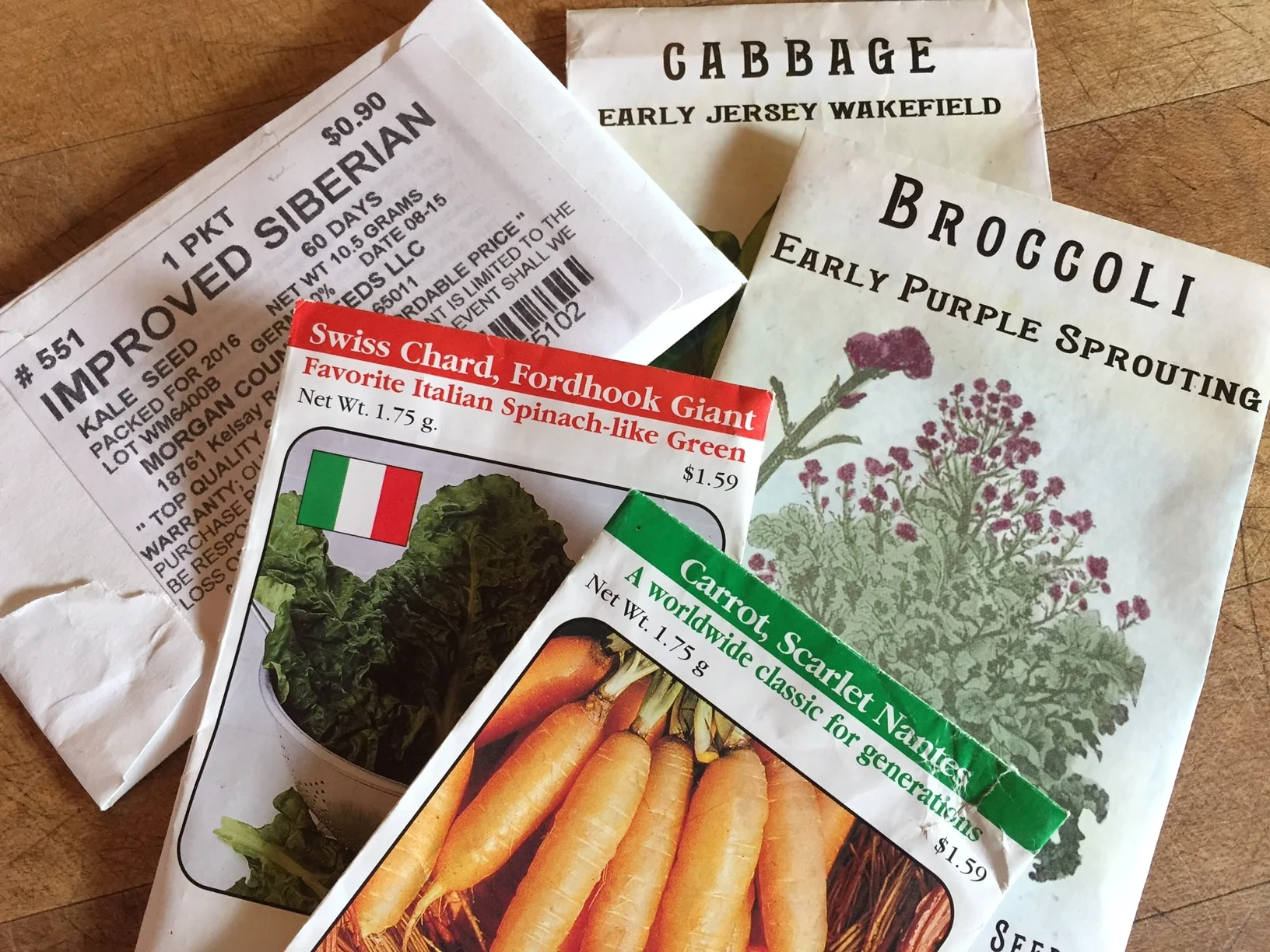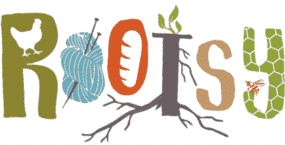Selecting seeds for your fall garden is the first step to a successful year-round garden.

The growing season need not end with the Autumn harvest! With careful planning and succession sowing, a bountiful fall garden can extend harvests into winter, and planting of overwintering varieties will give you a jump start on fresh produce in the spring.
What to Plant in your Fall Garden
As you plan your fall and winter garden, you’ll want to consider three types of crops:
- The first are crops that you will plant in the mid-to-late summer to harvest before the killing frosts of fall and early winter. Examples of this type of crop are beets, carrots, cabbage, and broccoli.
- The second are crops that you will sow in the late summer or fall to enjoy all winter long. Great examples of this type of crop are spinach, cilantro, parsnips, and kale.
- The third category is crops that you will also plant in the late summer or fall, but which will remain in the ground, often under frost protection, for harvest in the early spring. Certain brassica varieties fall into this category, as do late-sowed lettuce and spinach, onions, and garlic.
Selecting Cold-Hardy or Fast-Growing Vegetables
I like to think ahead to my entire growing season when I’m planning my garden and purchase seed so I have my fall garden seeds ready in mid-summer. Otherwise, summer fun and vacation plans can derail my planning and I end up getting a late start on seed sowing. When you purchase your fall seeds ahead of time, be sure to store them in a cool, dry location.
Because of shortening day lengths, if you intend to harvest before killing frosts arrive, it is important to select short-season cultivars. These may be labeled “early season” or “quick growing.” Read the seed packet or seed catalog description to compare the number of days to harvest, and pick the shortest number of days to maturity.
For instance, let’s say I was interested in planting a crop of beets in the late summer for fall harvest. I could head to one of my favorite seed company, MIGardener (which has non-GMO seeds for $0.99!) and compare three varieties, looking specifically at the Days to Maturity:
- Cylindra (60 days)
- Detroit Dark Red (55 days)
- Early Wonder (50 days)
Because Early Wonder will mature before Cylindra or Detroit Dark Red, it is an excellent choice for fall planting.
Where to Purchase Seed
I like to shop for organic, non-GMO seeds as much as possible, and of course, I need a good selection of cold hardy and quick-growing varieties for my fall and winter garden. There are a lot of good seed companies and MIGardener is one of them. They specialize in non-GMO seeds and most of their seeds are only $0.99 a pack. And Rootsy readers receive a 10% discount when you order through this link. There’s no code needed, it will automatically be deducted from your total at checkout.

Which Vegetable Varieties are Best for Fall Gardening?
When searching for seeds for your fall and winter garden, look for certain keywords that indicate cold-hardiness, frost tolerance, or a fast growing nature. Varieties like “Giant Winter Spinach,” “Arctic Tundra Lettuce,” or “January King Cabbage” are sure bets.
Here are a few varieties to consider:
- Asian greens such as “Tatsoi” “Mizuna” or “Tah Tsai Mustard”
- Arugula “Sylvetta”
- Broccoli “Fall Broccoli Blend”
- Beet “Early Wonder” or “Autumn Harvest Blend”
- Carrot “Napoli” “Merida” or “Scarlet Nantes”
- Chard “Fordhook Giant”
- Kale “Winterbor” “Improved Dwarf Siberian”
- Lettuce “Rouge d’Hiver”
- Leek “Bandit”
- Radish (Most radishes will produce a fast growing crop suitable for fall planting)
- Spinach “Giant Winter” “Winter Bloomsdale” or “Tyee”
- Turnip “Purple Top White Globe” or “Hakurei”
Several veggies from your Fall Garden are best preserved for winter by fermenting! Get Rooty’s “A Year of Fermented Food” e-book today!
Special Considerations for Fall Gardening
Because plant growth will slow considerably when the number of daylight hours drops below ten, it is important to plan and plant your fall and winter garden with plenty of time for crops to reach maturity before hitting this benchmark.
As such, with the exception of the fastest growing crops, your fall and winter garden will need to be sowed in the middle of summer. On my NE Missouri homestead, I begin fall crops in late July and continue succession planting through September.
Thanks to Missouri’s incredible summer heat, humidity, and pest pressure, I must pay close attention to my fall garden if I want it to succeed. Here are a few considerations:
- Soil Temperature: Too-warm soil temperatures can inhibit germination success in some crops. For instance, lettuce, parsley, spinach, and Chinese cabbage appreciate cooler soil temperatures and may do better either being sown indoors and transplanted later or being sown under a shade cloth that will lower soil temperatures.
- Moisture: Late summer droughts are common here in the Midwest, so special care must be taken to ensure that seeds have ample moisture to germinate. Particularly if you are sowing carrots or parsnips, be prepared to keep the soil moist for at least a week.
- Pest Pressure: Cabbage moth larvae and flea beetles are among the many pests that adore my fall garden seedlings! Covering beds with a floating row cover helps, as does diligent hand picking of caterpillars.
Growing food year-round takes a bit of extra planning and attention, but the rewards are great. Whether you fill a homestead root cellar with the bounty of a fall harvest, enjoy fresh salads in the middle of winter, or delight in a crop of spring onions long before your friends have even thought about gardening, growing a fall and winter garden is a huge boost to your self-sufficiency.
Helpful Resources
Johnny’s Seeds Winter Growing Guide
Gardening Under Cover: A Northwest Guide to Solar Greenhouses, Cold Frames, and Cloches
Four-Season Harvest: Organic Vegetables from Your Home Garden All Year Long
What varieties of seeds do you love planting in your fall and winter garden?
Please share in the comments!


Brenda
Saturday 14th of July 2018
I thought all seeds sold to the public are GMO free, only seeds sold to farmers are GMO